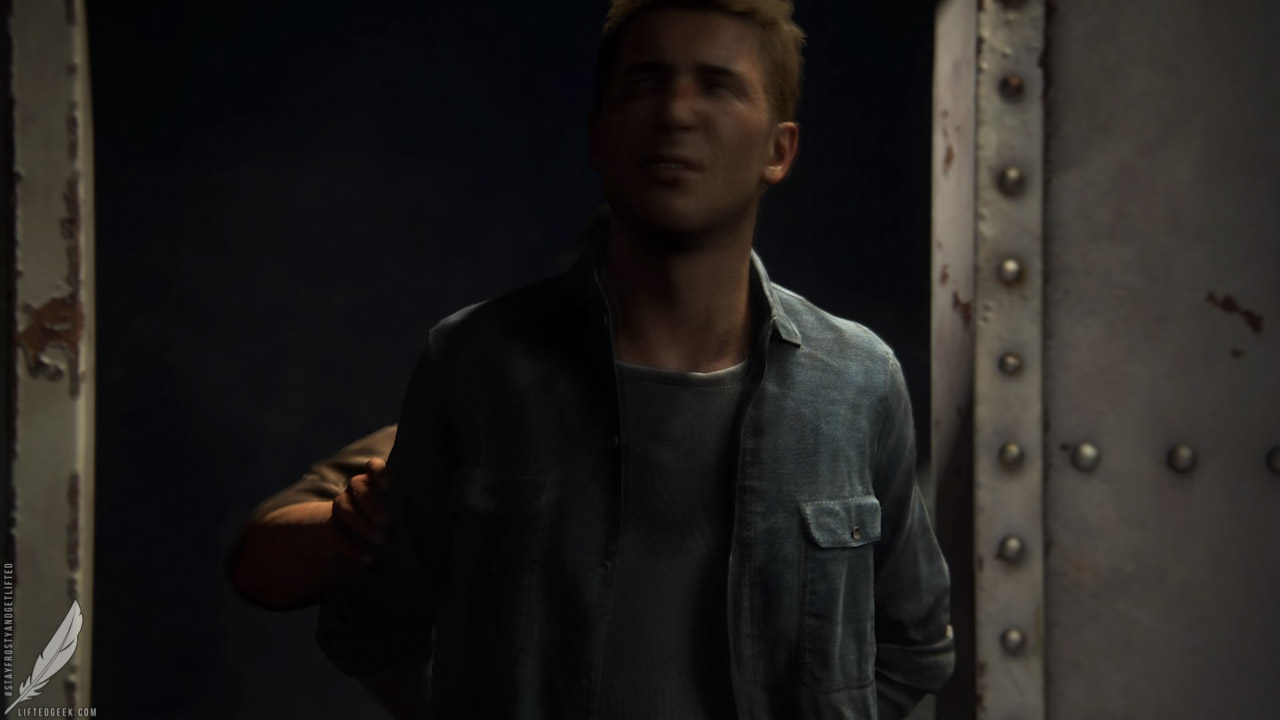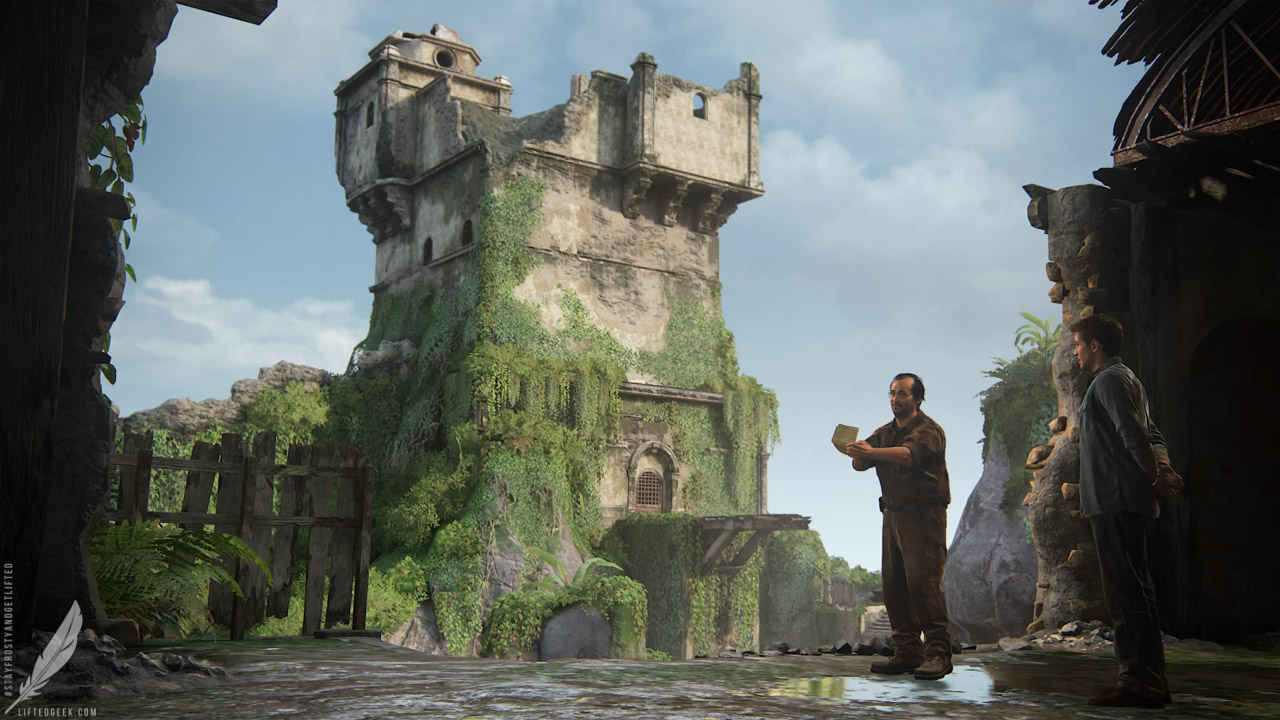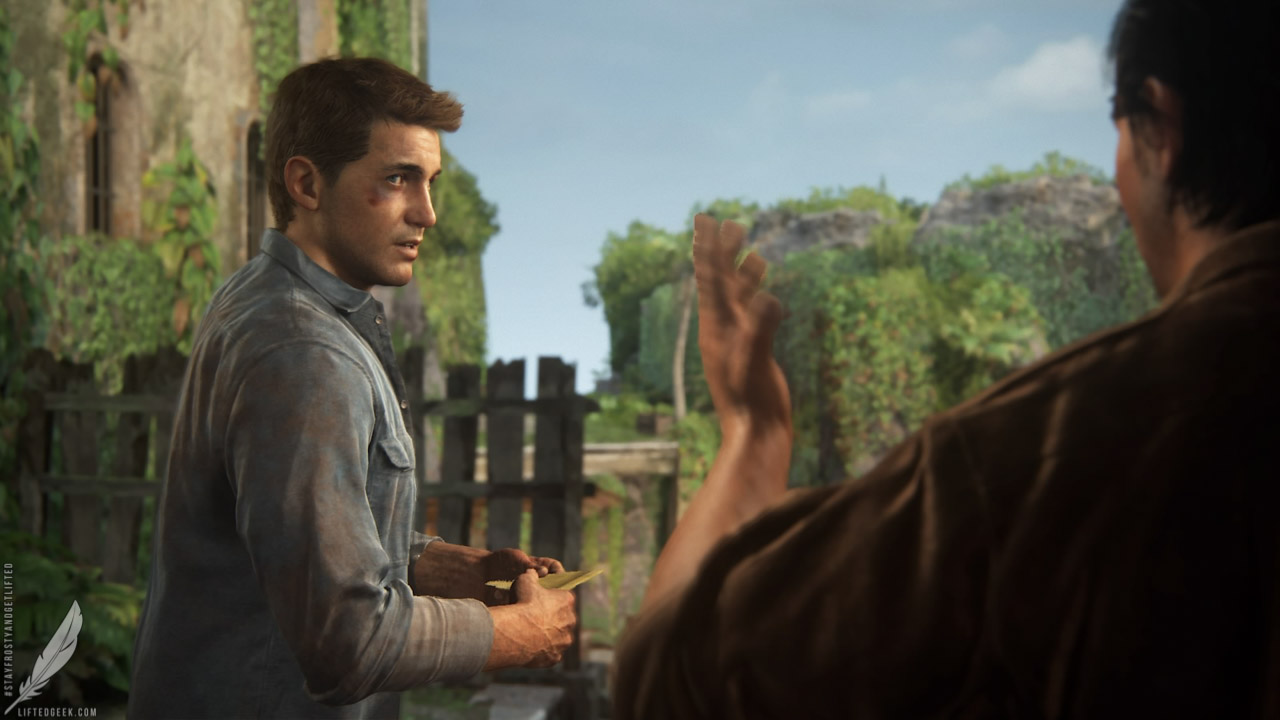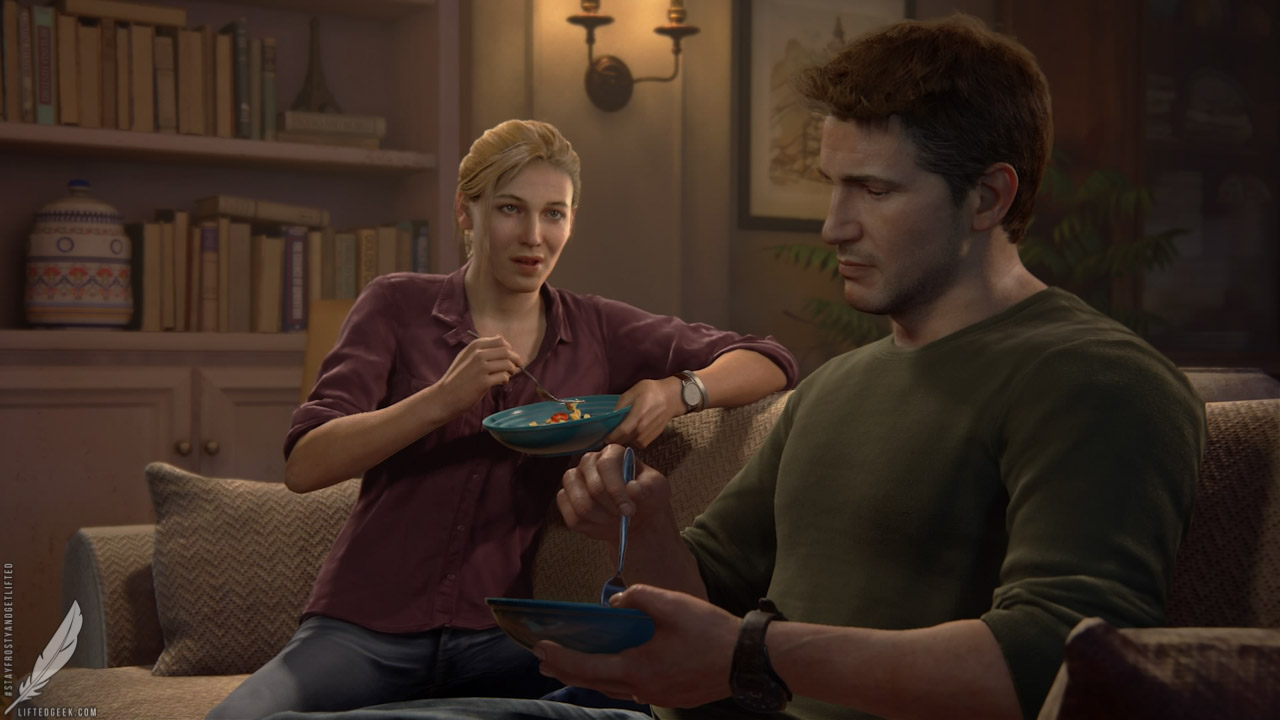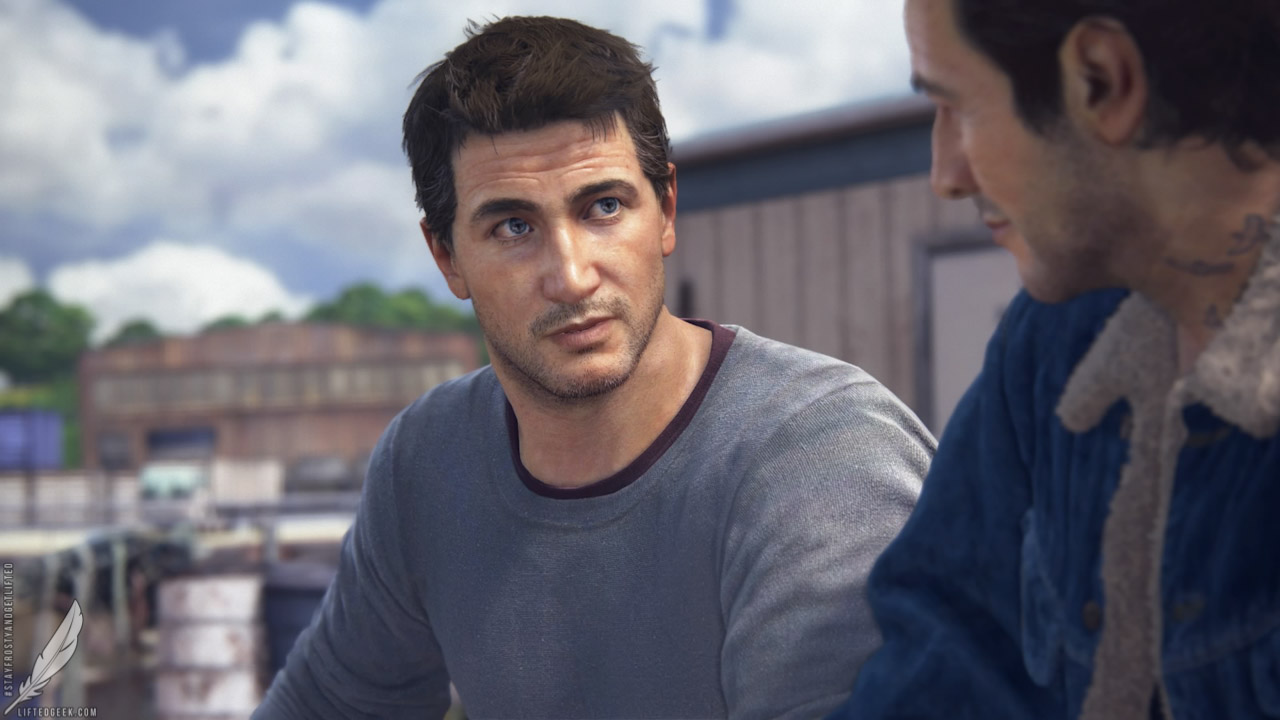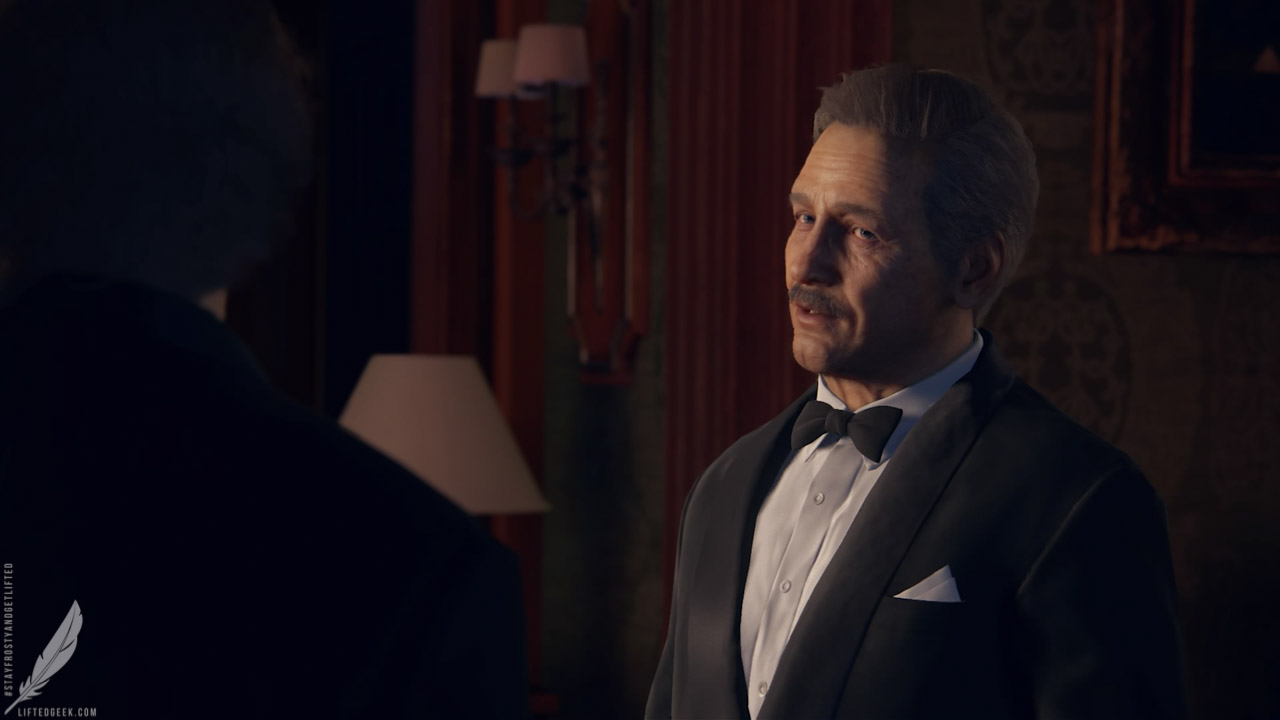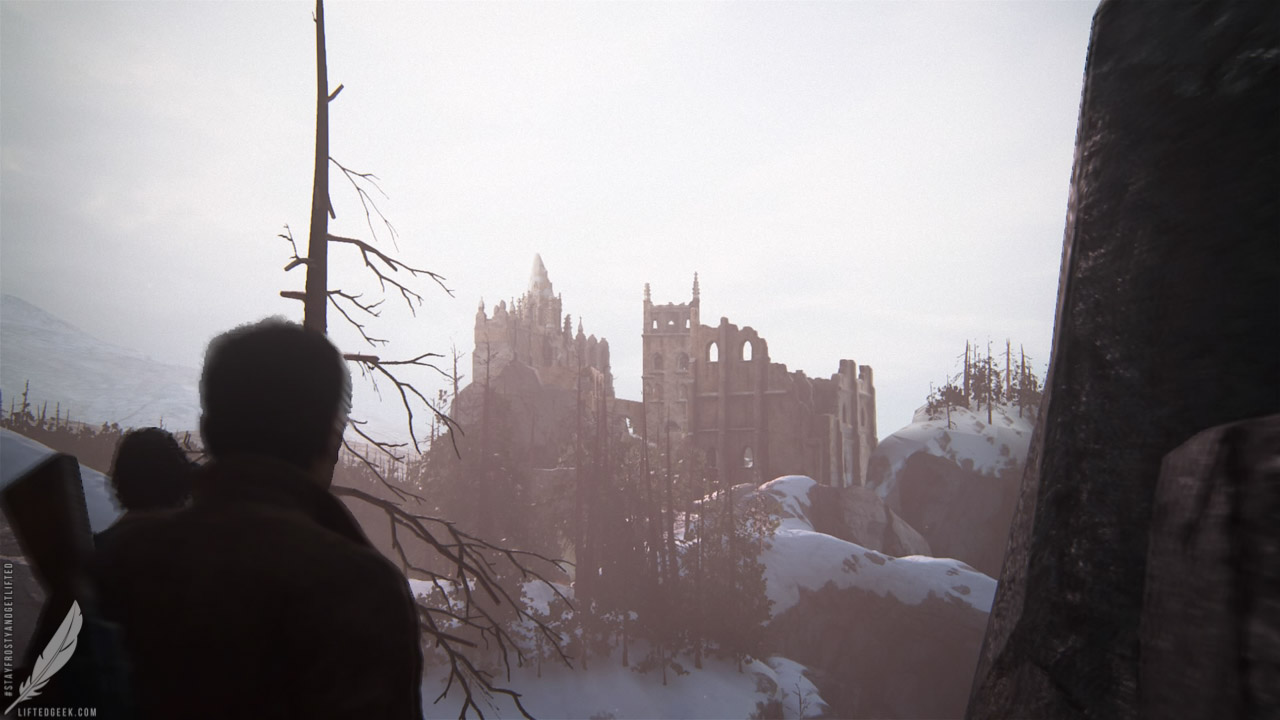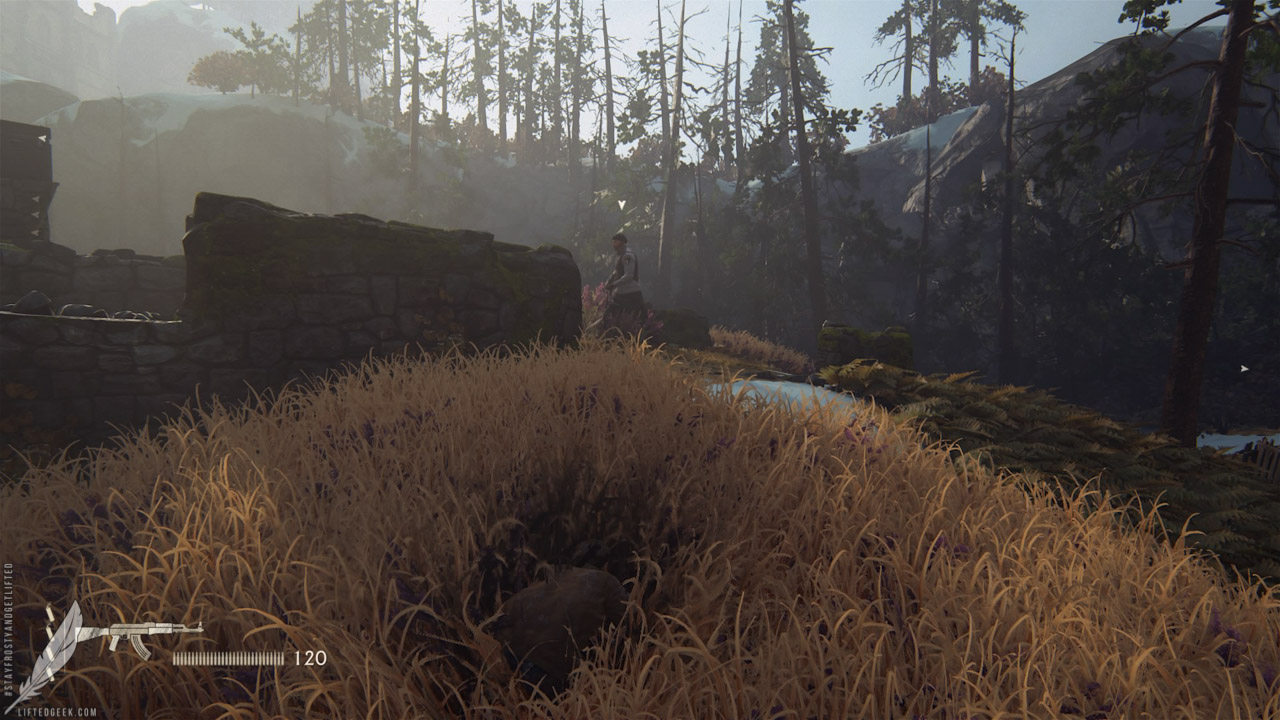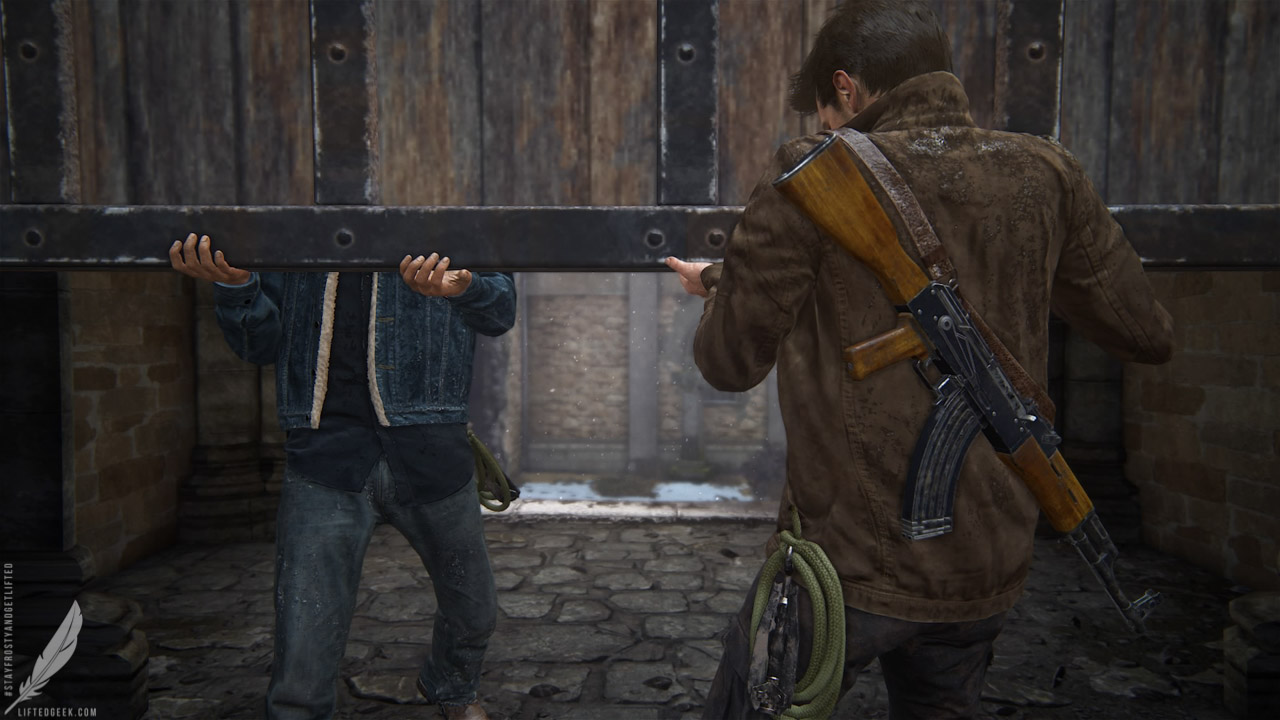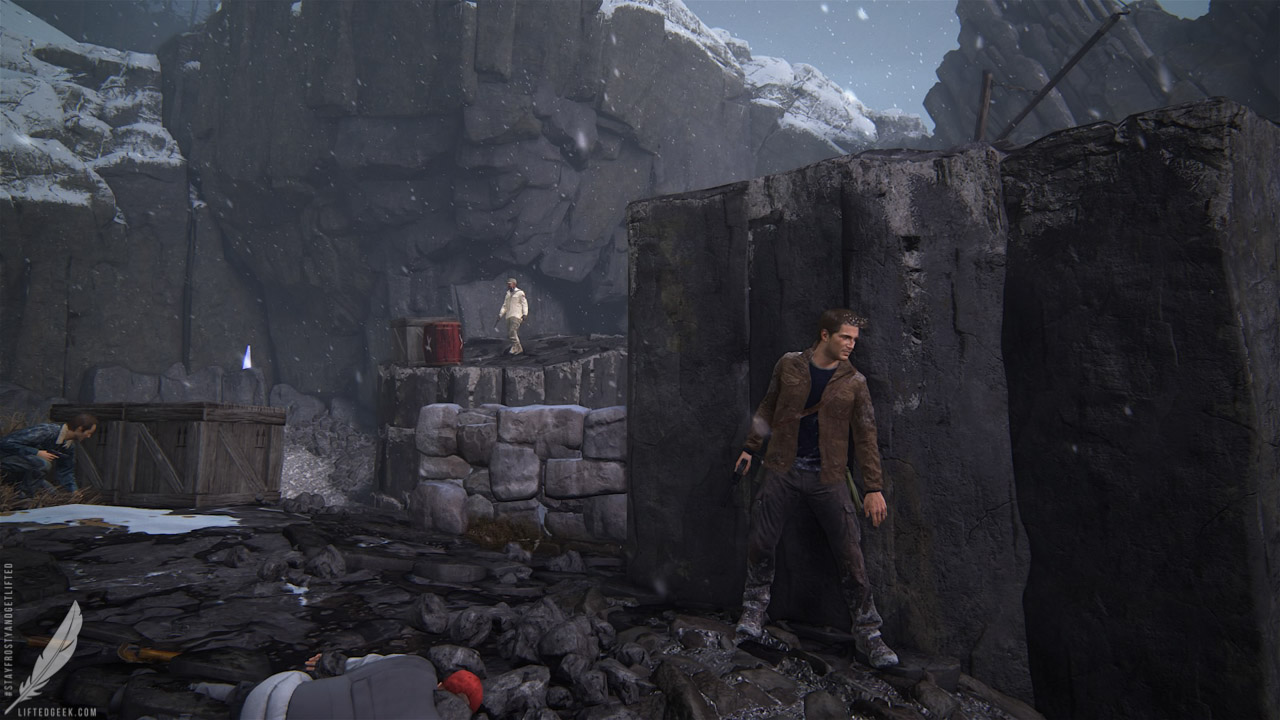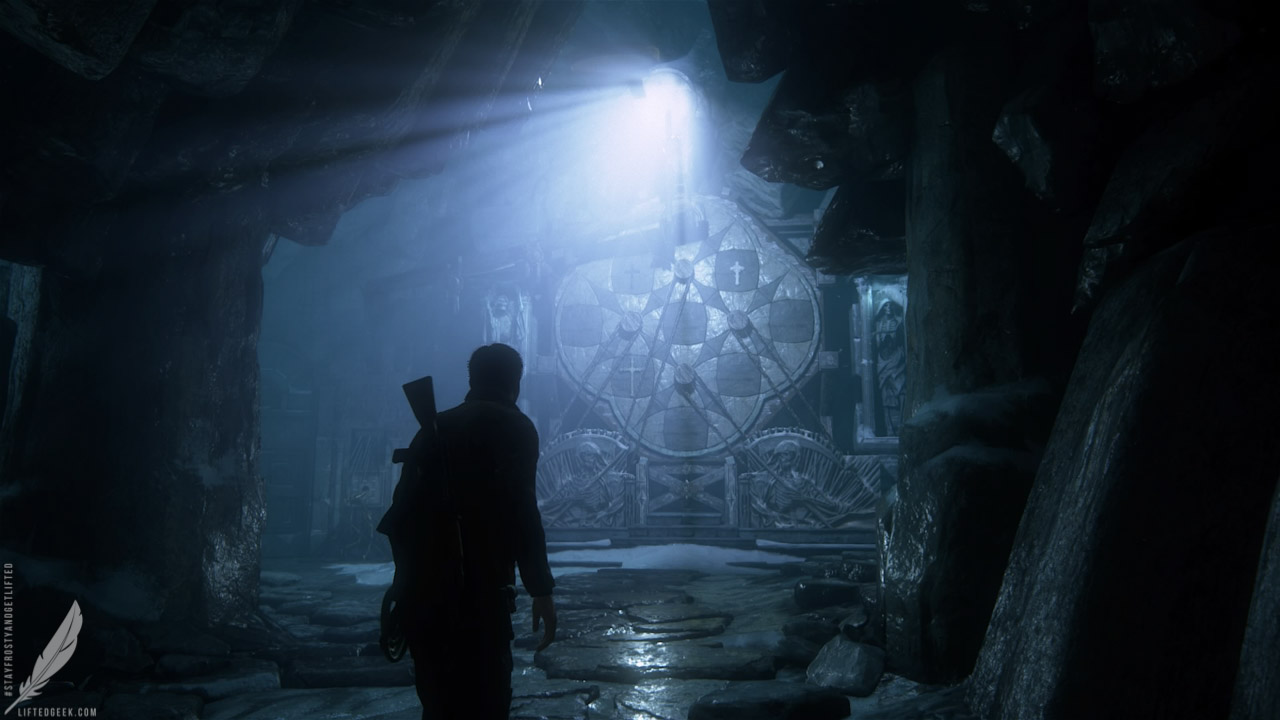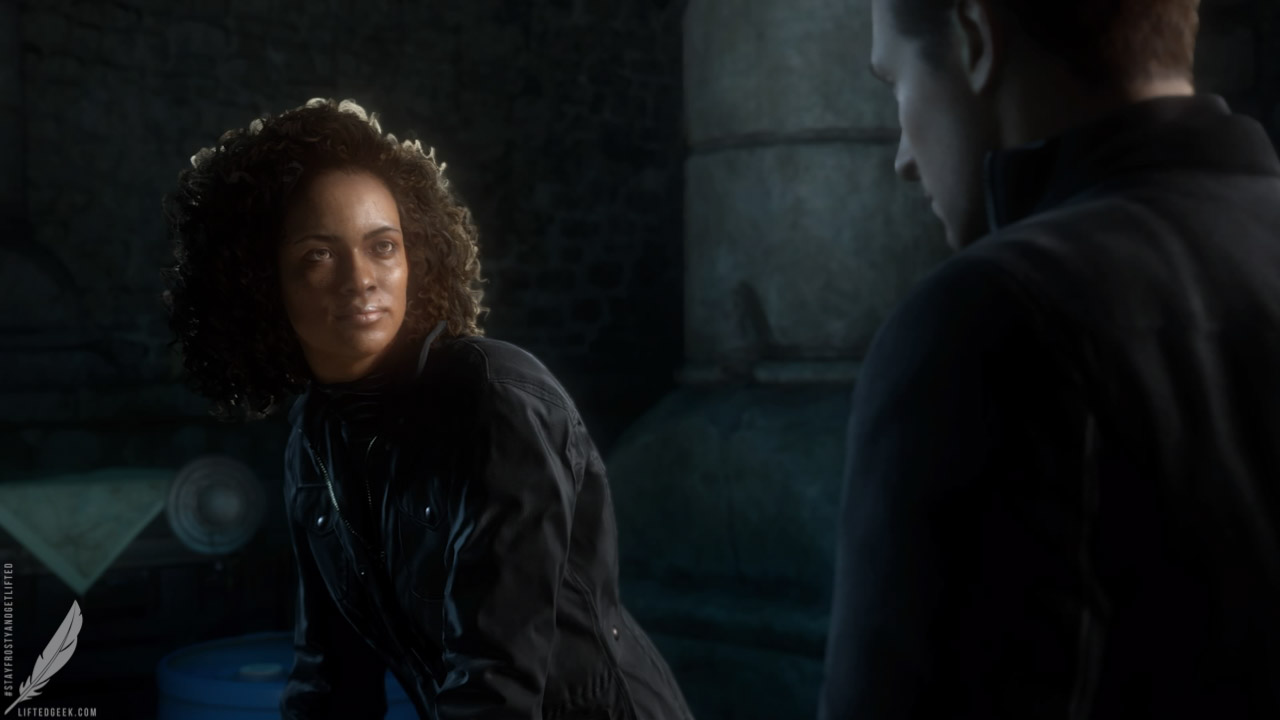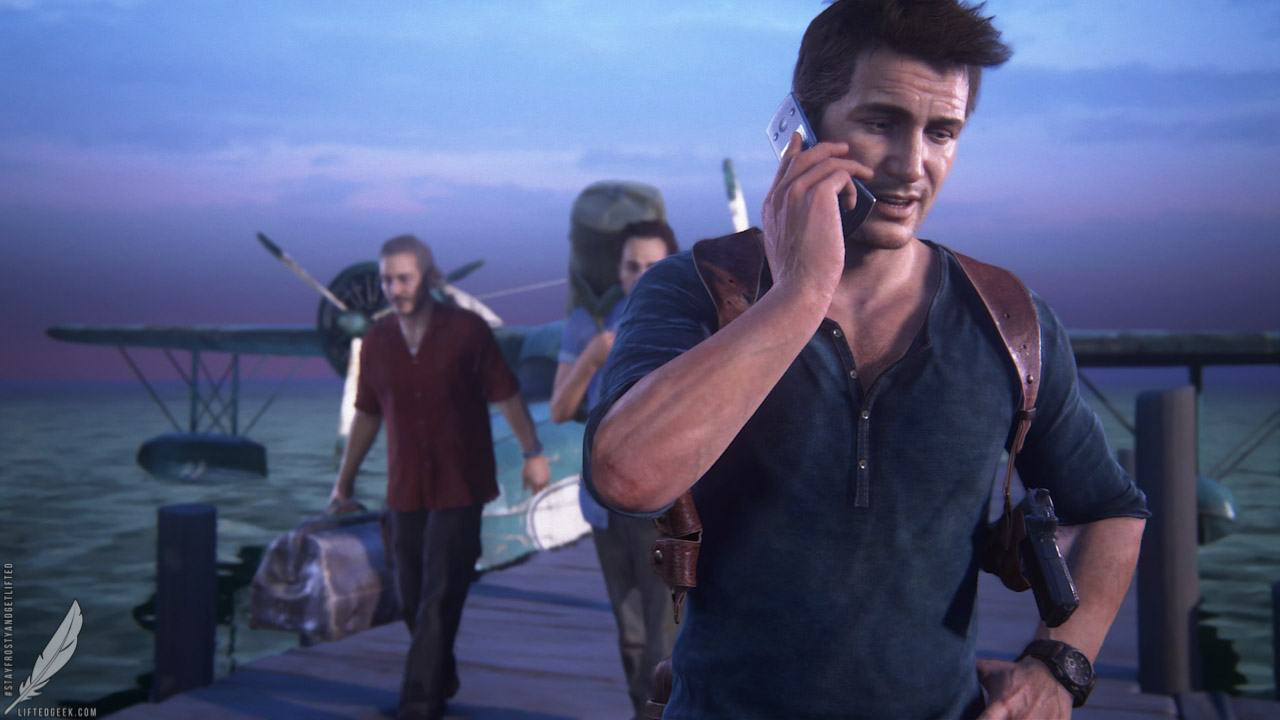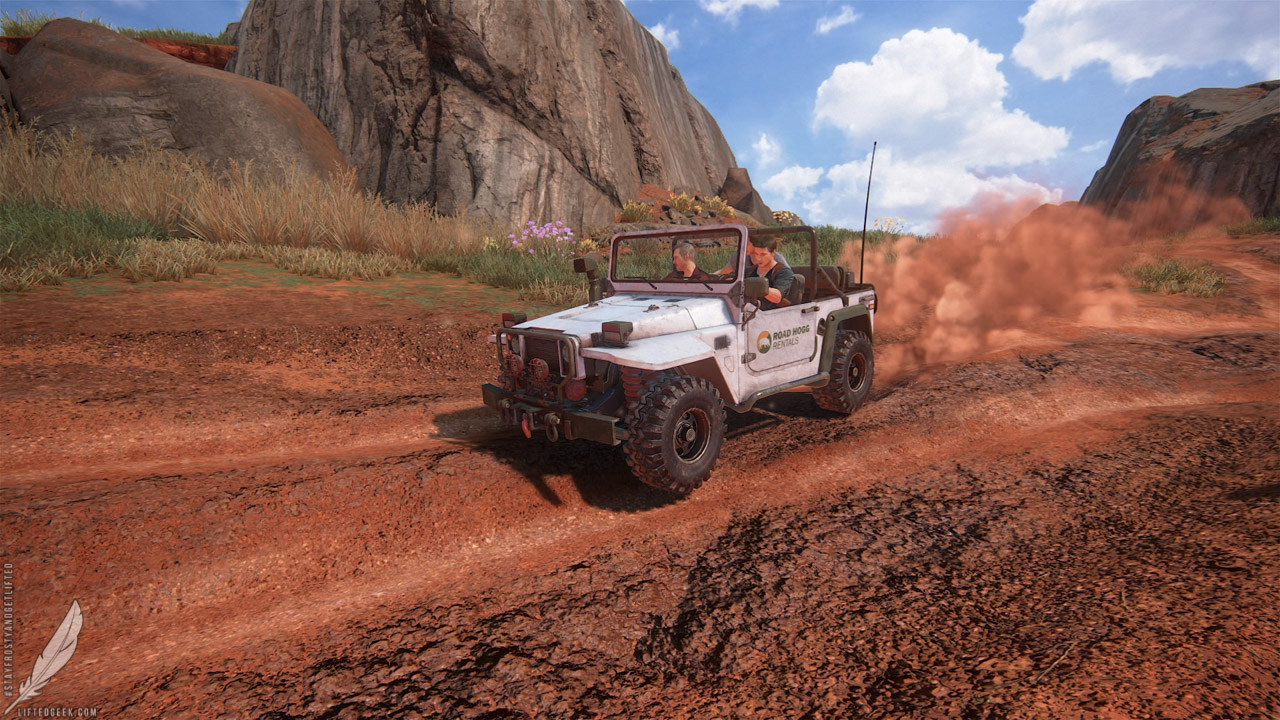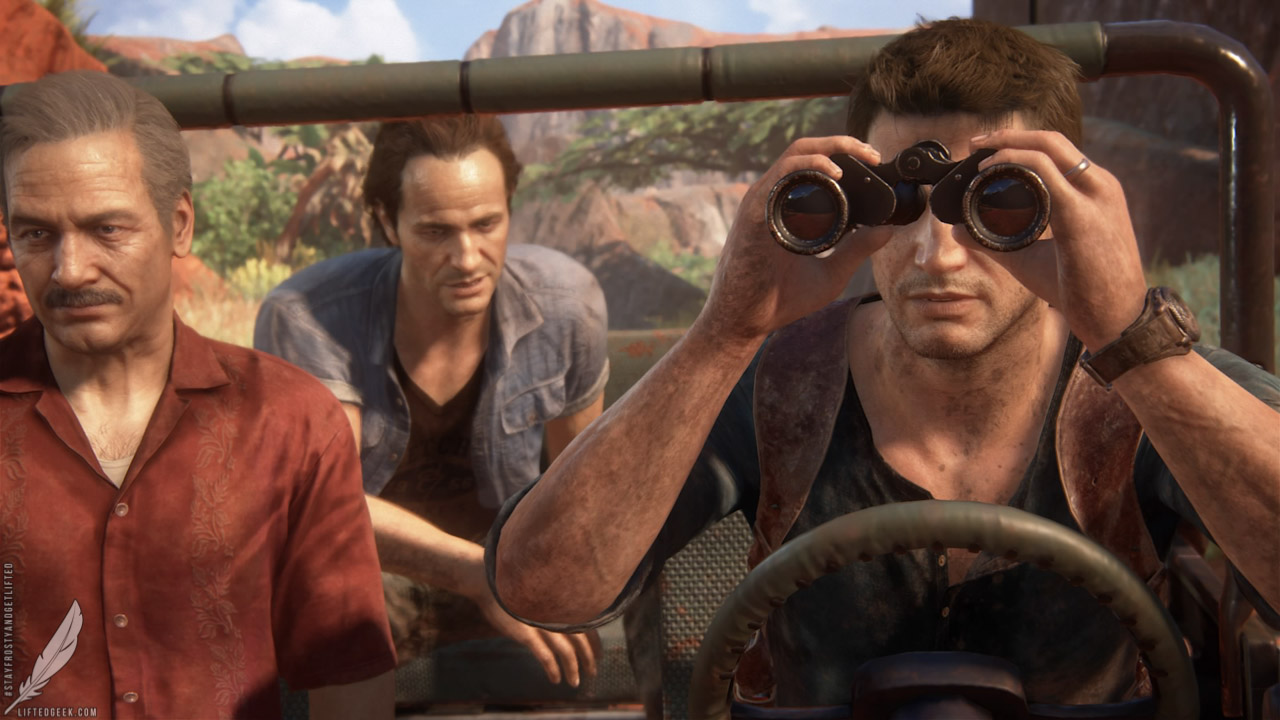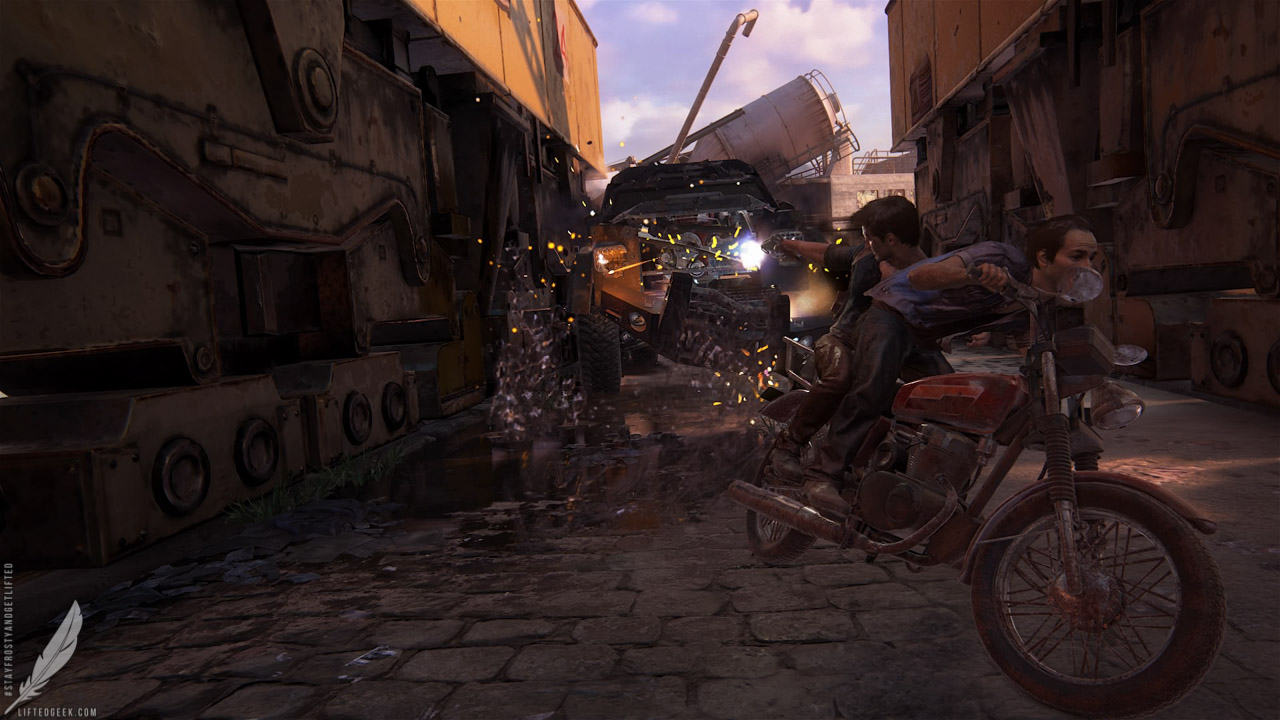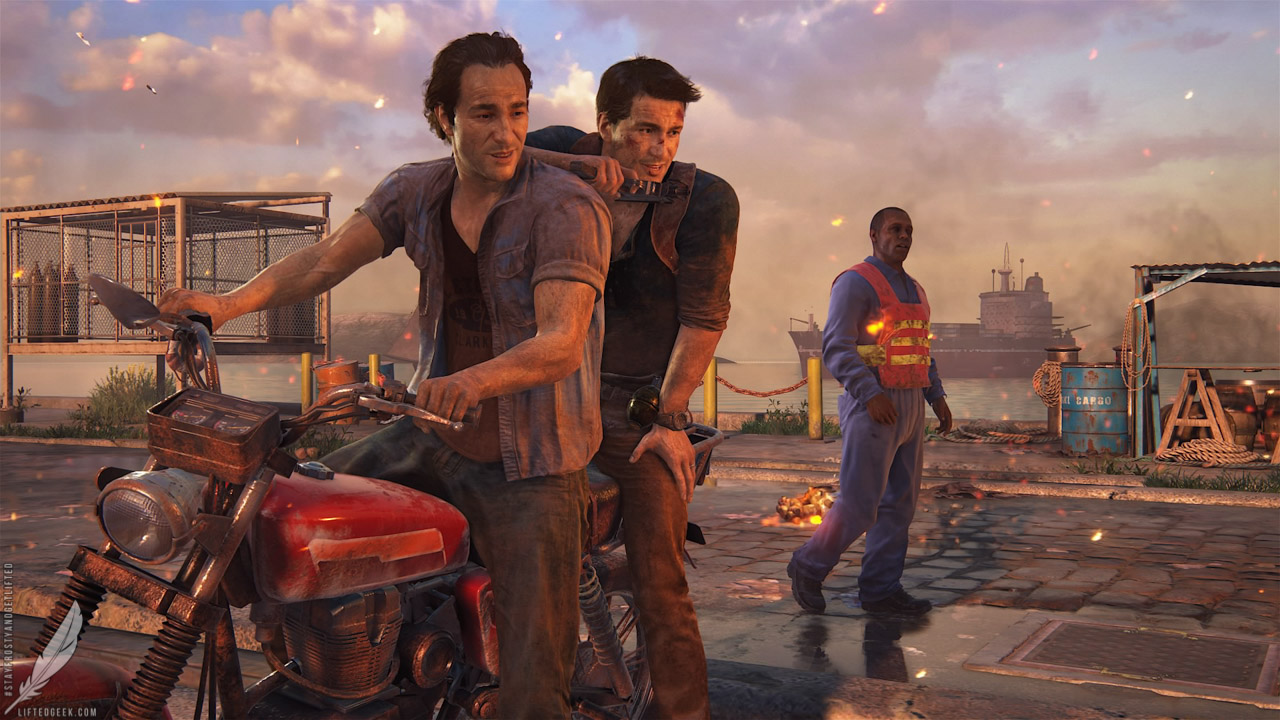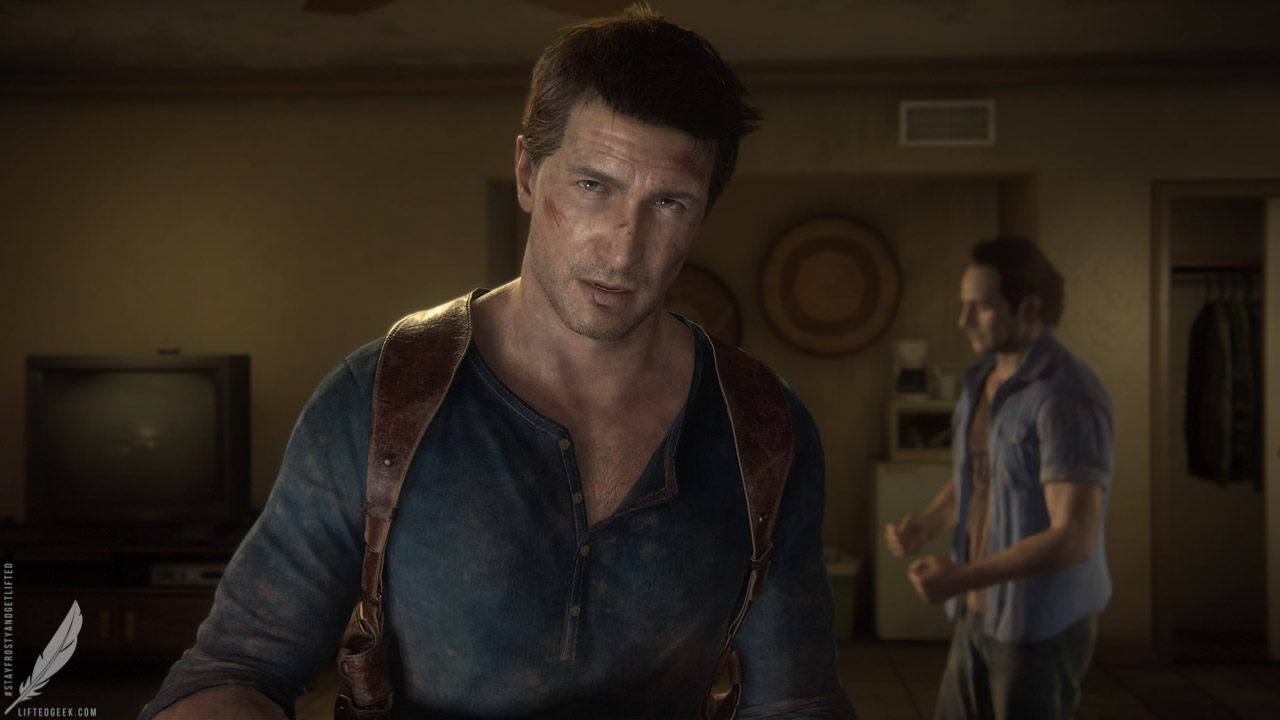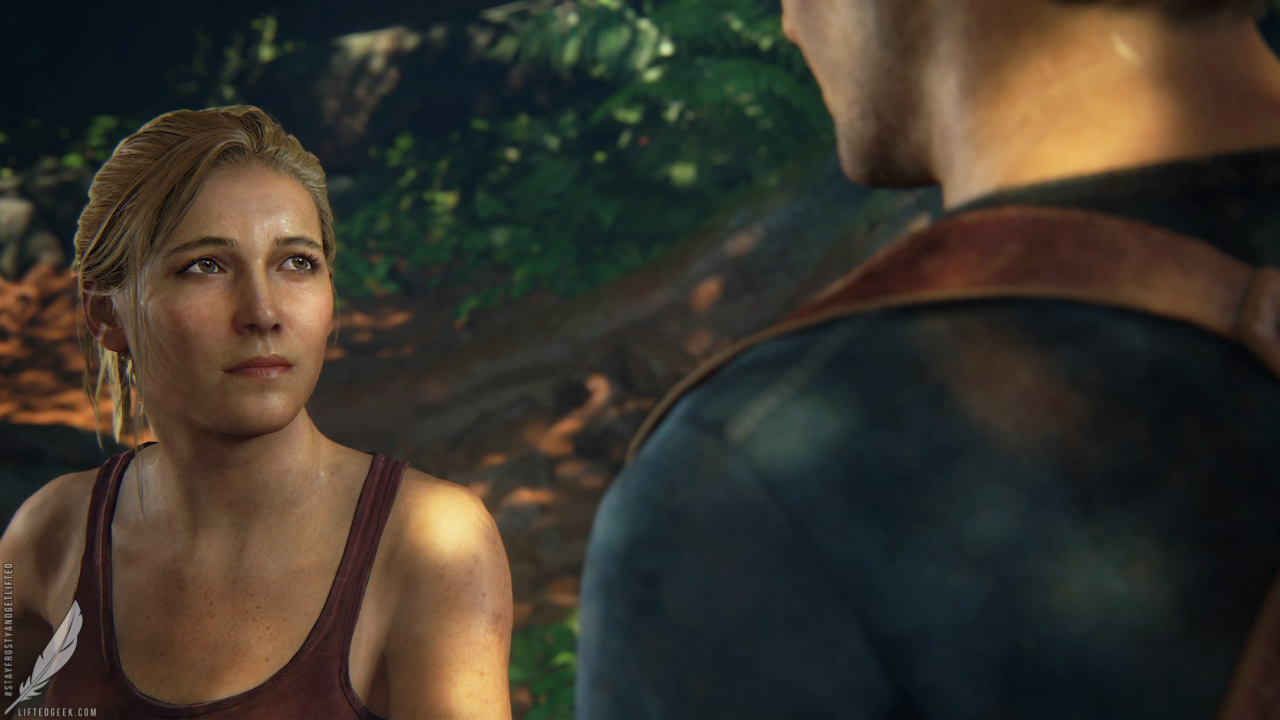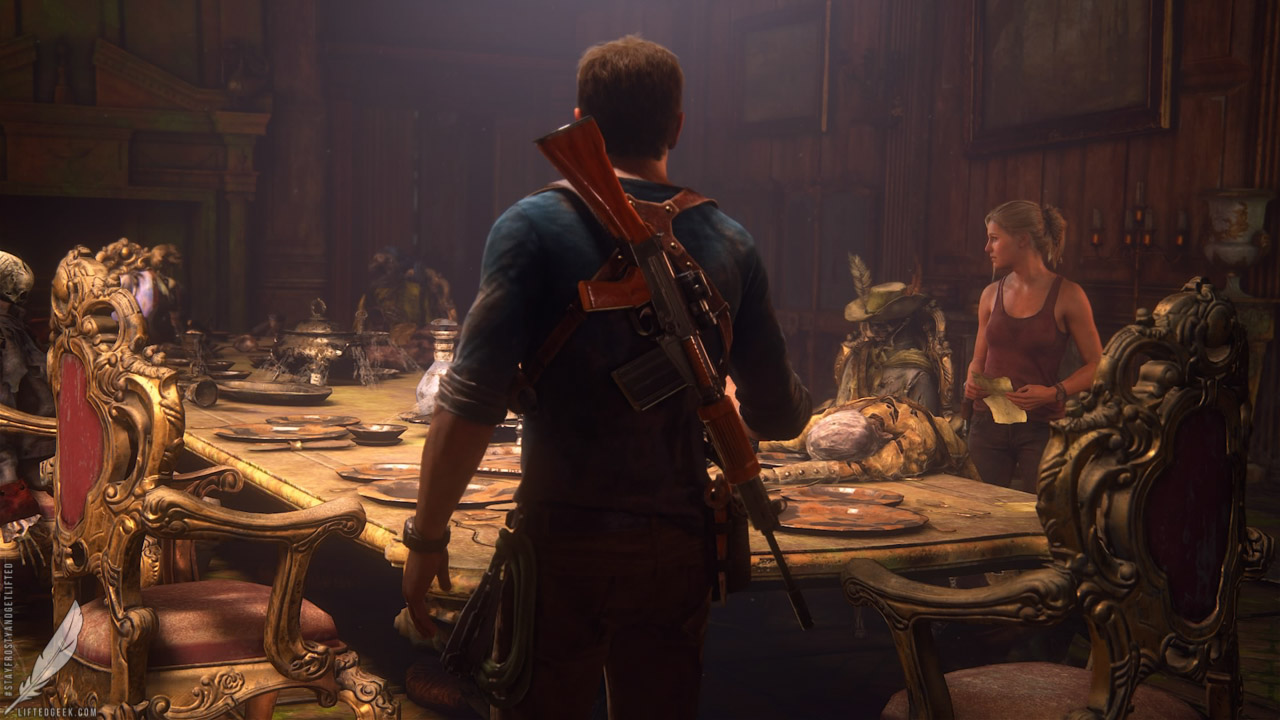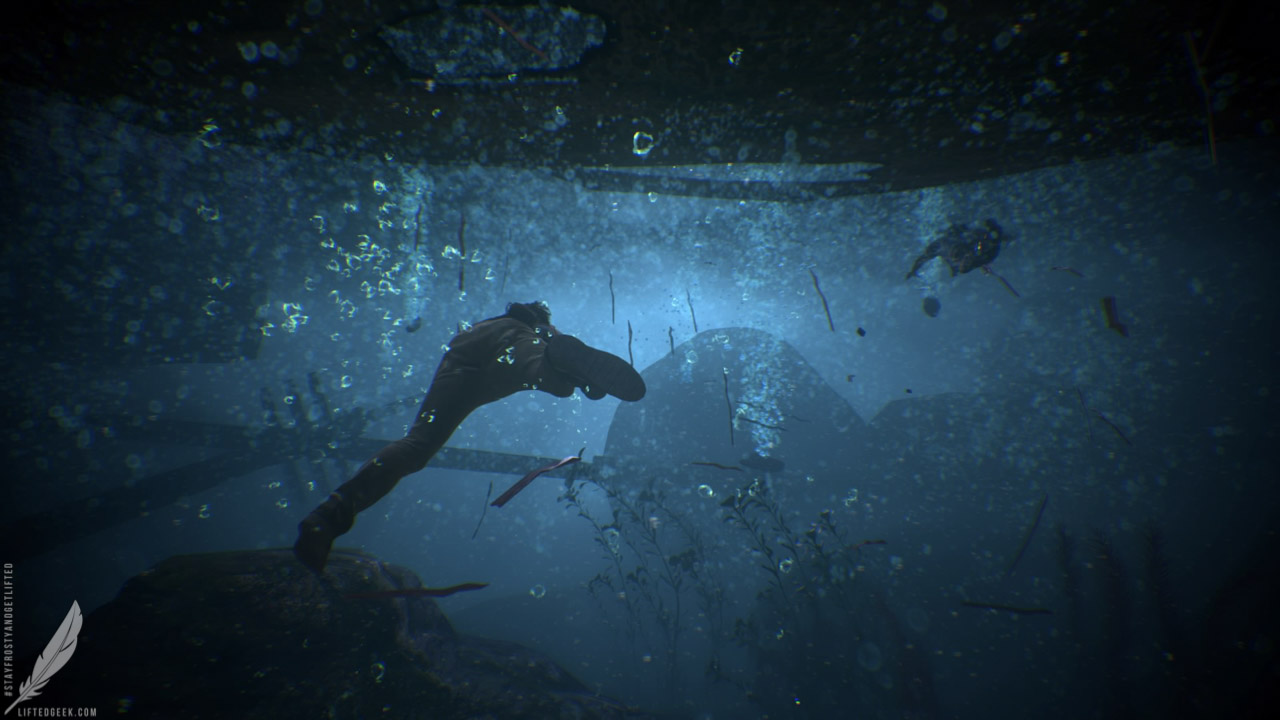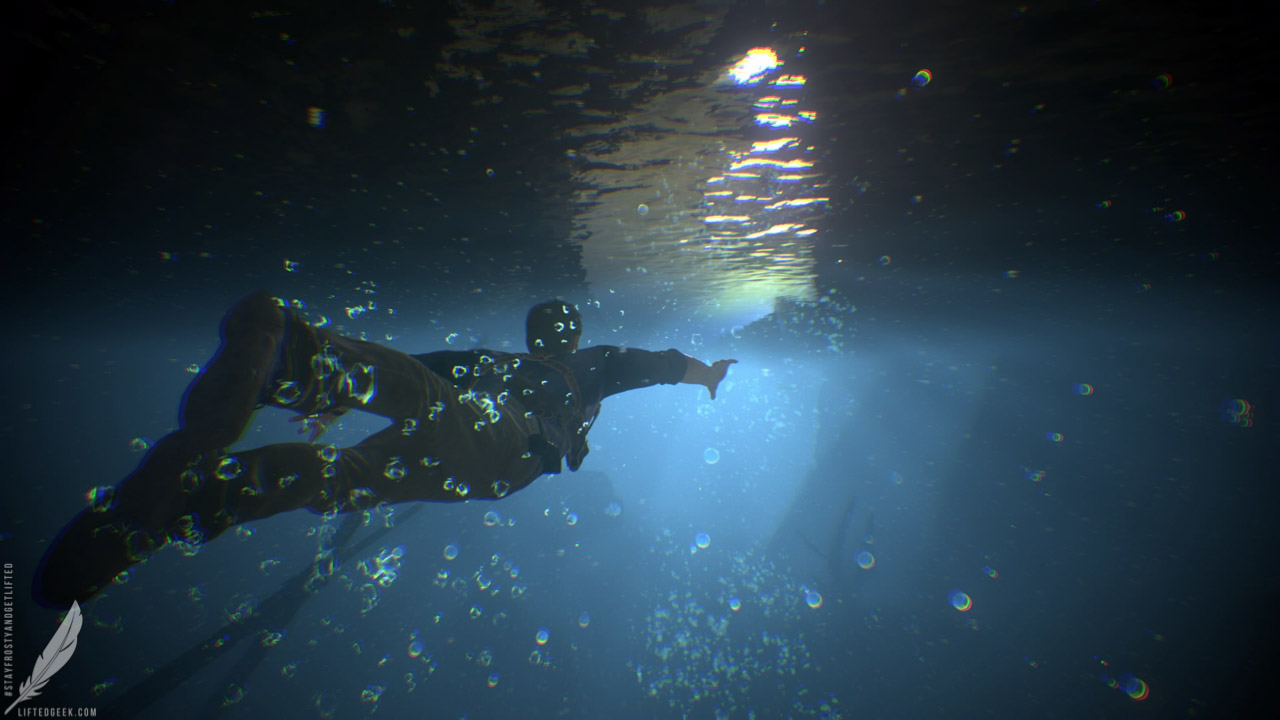Uncharted 4: A Thief's End (REVIEW)
written by Justin Prince (@prince_justin)
When you think about what makes a good adventurer, a list of qualities come to mind. Genius intellect? Check. Proficiency with firearms? Check. Charm and wit? Check. All qualities possessed by one Nathan Drake… the charming and roguish lead of the Uncharted series of video games. Drake’s road to greatness has been paved with all kinds of adventure, he’s discovered the truth of El Dorado, uncvered the lost city of Shambhala, and also stumbled upon Iram of the Pillars (the Atlantis of the Sands)… and that was just in the main games.
Picking up after the events of Uncharted 3: Drake’s Deception, Nathan and Elena have settled into a comfortable domestic life, complete with a legit job that doesn’t involve being shot at or chased by raging monsters. This peaceful life is interrupted when a ghost from the past comes-a-knocking at the door when Nathan’s older brother Sam comes back from seemingly being dead for the past 15 years.
Nathan’s peaceful existence is rattled when Sam proposes chasing down the treasure of a legendary pirate, Captain Henry Avery; a job that the Drake brother’s previously attempted to track down 15 years ago. Valued at over $400 million, if the adventure wasn’t alluring enough… the profit would be. Initially reluctant to oblige, Nate is pulled back in when Sam tells his brother that ruthless Panamanian drug lord Hector Alcázar orchestrated Sam’s prison break and is forcing Sam to track down Avery’s treasure in exchange for sparing Sam’s life.
your peaceful days are about to get disrupted
This was enough to rekindle Nathan’s interest in Avery’s gold. Employing the aid of long time friend and mentor Victor Sullivan, Nathan lies to Elena and goes globetrotting with Sam to hunt down the old pirate’s treasure. Standing in their way is Rafe Adler, a man who previously worked with the brothers 15 years ago when they first attempted to track down Avery’s gold, and his partner Nadine Ross, the leader of South African PMC Shoreline. All this is part and par for the course when it comes to Nathan Drake’s adventures.
Gameplay retains much of the elements from earlier games. While still the same, everything is refined and tweaked to accommodate the more powerful PS4.
“in a post The Last of Us world, much of Naughty Dog’s other major gaming masterpiece is felt in Uncharted 4”
Shooting functions as it did in earlier games with Nate being able to shoot from any position, hanging, being dragged, etc. Objects in the environment are now destructible from gunfire and brute force. For example, sandbags appear as cover items and as they are shot they leak and shrink, making them less useful as cover.
Climbing remains a staple gameplay feature, though now is more detailed in terms of animation and execution. Seemingly being inspired by a certain tomb raider and her franchise, Drake can now drive a piton into craggy rock faces to reach higher heights, mainly to bridge gaps between handholds. While similar to Lara’s climbing axe, Drake’s piton isn’t as versatile.
Reach for it Nate!
The newest addition to Drake’s arsenal is a collapsible grappling hook which allows him to swing to new areas and avoid enemy fire or to close the gap between enemies. Handholds apparently break more dynamically, based on angle approached and if they were jumped to, instead of just being scripted.
Melee combat appears more dynamic, with enemies being able to counter Drake's attacks and attempt to use weapons during fist fights. Enemies pulled from ledges will now sometimes attempt to grab Drake, players must force them off or be dragged down with them. Stealth has been incredibly revamped from the pseudo-stealth gameplay of previous games to a more refined experience. Drake can now hide in tall grass, and by breaking the line of sight with all enemies, Drake can return to stealth; unlike the previous games which forced the player to kill all enemies in the area to proceed.
There is also a new system alerting players to enemies that can see Drake and what direction they can see him from. Enemies that make noise (such as whistling) will now be highlighted, in order to plan attacks or avoid them. You can also tag enemies, being able to keep track of them as you plan your stealth engagements.
During some specific chapters in the game, vehicles return to the series… fully drivable for the first time since the Jet-ski in Uncharted: Drake's Fortune, as opposed to the minor control of Elena's jeep from Uncharted 3.
it wouldn't be an Uncharted game without discovering exotic seemingly lost cities
Familiar yet new, Uncharted 4’s gameplay is the perfect mix of tried-and-true gameplay mechanics with the new keeping this next chapter in Nathan Drake’s adventures fresh yet familiar. Using the grappling hook is a delight, sure it may be satisfying to pop one off in a bad guy’s dome… what’s more satisfying is swinging above an unsuspecting guard and dropping down on them from above.
One aspect of the Uncharted series that never fails to impress are the games grandiose set pieces. Bigger and more action packed than previous games in the series, Uncharted 4 dials it up to eleven. I found myself jumping right back in (on a higher difficulty level) just to experience Uncharted 4’s sublime gameplay again.
Living in a post The Last of Us world, much of Naughty Dog’s other major gaming masterpiece is felt in Uncharted 4. Most of the game has Drake exploring locales with a companion (similar to how Joel and Ellie). Finding creative ways to get around, moving heavy wheeled crates, boosting up your buddy, and helping said buddy open heavy doors are just a few of the examples of just how much The Last of Us has influenced A Thief’s End. It never did feel out of place and unlike the weird companion AI from The Last of Us, your buddy here seems to better get into hiding than Ellie ever did during her and Joel’s romp through post-apocalyptia.
welcome to dinner
Not just felt in the gameplay mechanics, much of The Last of Us is felt in the core narrative as well. While Nathan Drake and company retain the razor sharp wit and charm of previous games, the story does exhibit some of the most emotional and impactful scenes from any of the previous titles. While there were some scenes from past games that tugged at my heartstrings, like the airport scene from Drake’s Deception, the level of emotional gravity felt was never as poignant as it was in A Thief’s End.
I won’t spoil the story for you, but Nathan Drake’s relationships with his wife Elena, trusted father figure/mentor Sully, and the totally-not-dead big brother Sam are taxed to their absolute maximum in what I can assume is the final chapter of the Uncharted series. While I was worried when long time Uncharted creative director/lead writer Amy Hennig left Naughty Dog before completing Uncharted 4, the appointing of The Last of Us lead Neil Druckmann turned out to be the right move.
One major low point I feel I have to touch on is the game’s final battle. Without giving away any spoilers, it ends up being a series of QTE button presses that culminate into the final scenes. This is very similar to the final “battle” from Uncharted 3, but the difference maker is that in Uncharted 3 you faced down waves of demonic hallucination demons and gun toting soldiers before getting to this final scene. Aside from facing down a few members of Nadine’s PMC, there never was a grand gunfight before the game’s end… one could say that the game was littered with great combat moments but fizzled at the very last 5%. While it is a bit of a let down, 95% of the game being sublime and pure unadulterated gaming bliss… I can’t complain too much about the whole package.
The cast is much smaller this time around; on Team Drake Bros we have Nate, Sam, Elena, and Sully… Team Bad Guy is primarily Rafe and Nadine (plus the might of the Shoreline PMC). Notably absent are Chloe Frazier and Charlie Cutter, two characters I personally missed and wished that they at least made a quick cameo during the game. While I understand this is meant to be a smaller cast, focusing heavily on Nate and Sam, I missed what Chloe and Charlie contributed to the story.
oh shit oh shit oh shit!
Before closing this out, I feel I need to touch a bit on the multiplayer aspect of the game and how freaking divine it is. The typical game modes you’d expect from a multiplayer shooter are represented. Mechanics are largely similar to the Factions multiplayer mode from The Last of Us… yet another key TLOU bit that made its way into the Uncharted franchise. Multiplayer is fast, furious, and surprisingly accessible to a wide gamut of players from different skill levels. While gameplay is less complex than TLOU’s Factions mode, it does manage to reward good team play much in the same way that Factions did. A team with strong communication of tactics and load-outs will always triumph over a randomly thrown together party without mics.
Much like the main game, the same attention to detail and playability is present in the multiplayer maps. Not just content to be a pretty face, these maps carry with it some serious substance. Masterfully designed, these multiplayer maps work to keep players flowing through the battlefield during the game’s fast paced combat.
Some Amy Hennig purists may disagree with me here, but the emotional impact of the key scenes from A Thief’s End outperform anything from the previous titles. The series as a whole is one of my favorite gaming series of all time, and I admire Hennig for helping build such an amazing series, but one thing the previous Uncharted games lacked was an ending that truly felt final. The previous games had that walk-off-into-the-sunset feeling which I’m sure made it easier to set up the next title in the series… but with the way Uncharted 4: A Thief’s End closed out its story, it felt final and I’m okay with that… after all that’s been said and done, Nathan Drake has been taxed to his limit on far to many occasions, it’s about time the legendary adventurer gets his chance to enjoy his retirement.
PROS:
+ Sublime gameplay mechanics, refined from last gen
+ Exceptional cast
+ Damn near perfect multiplayer
+ Familiar yet also innovative
CONS:
- Last boss was a let down
- Still no map








